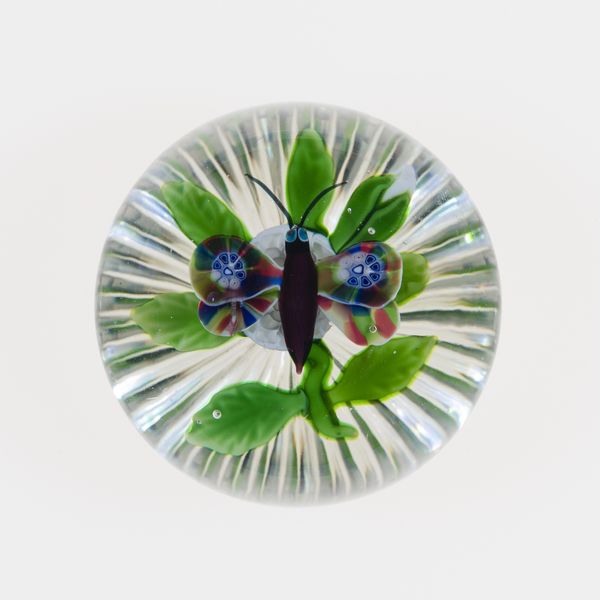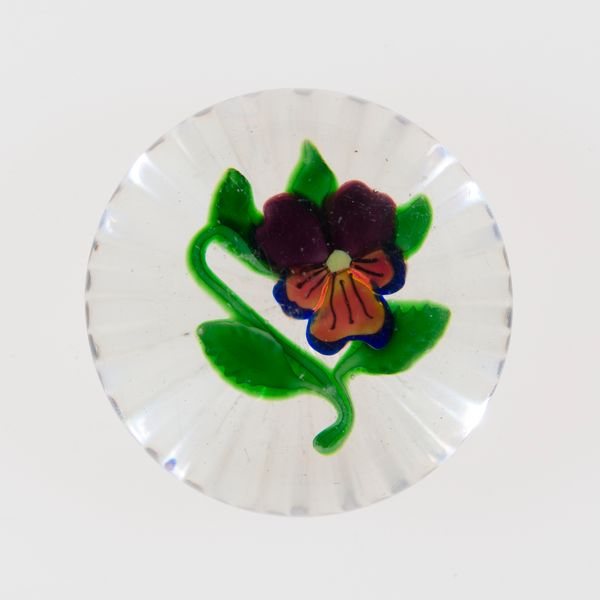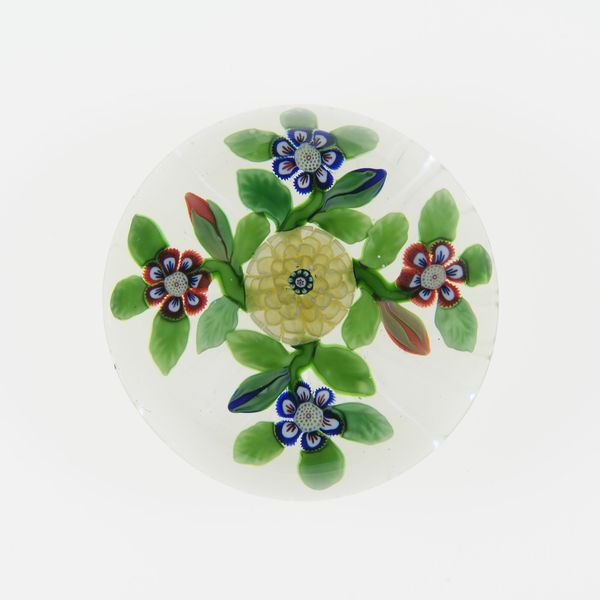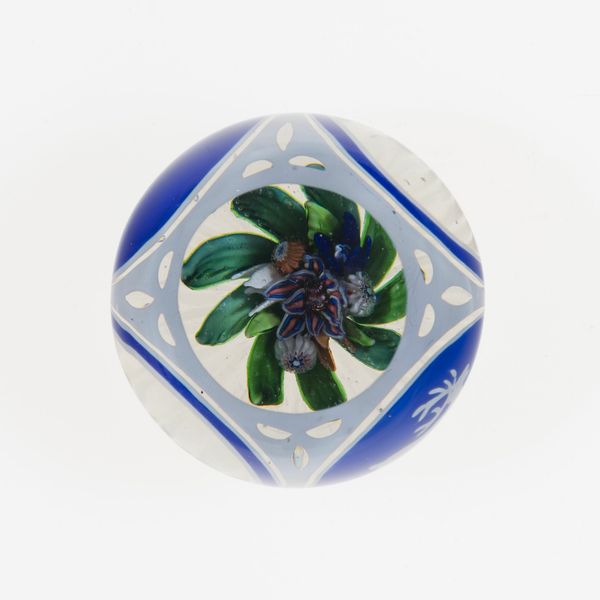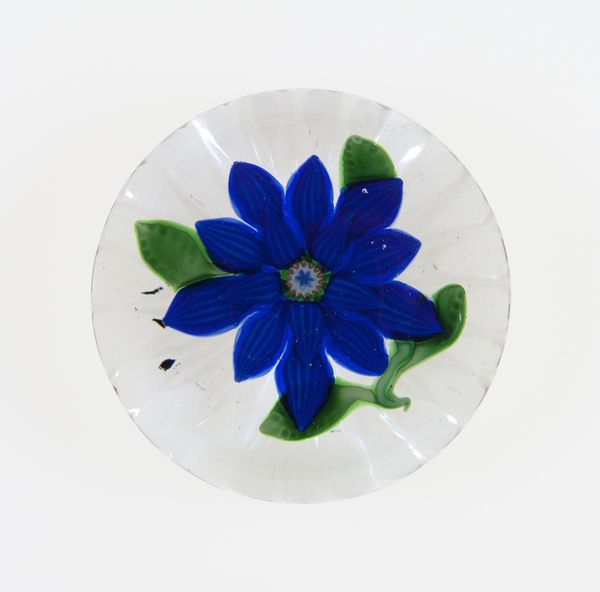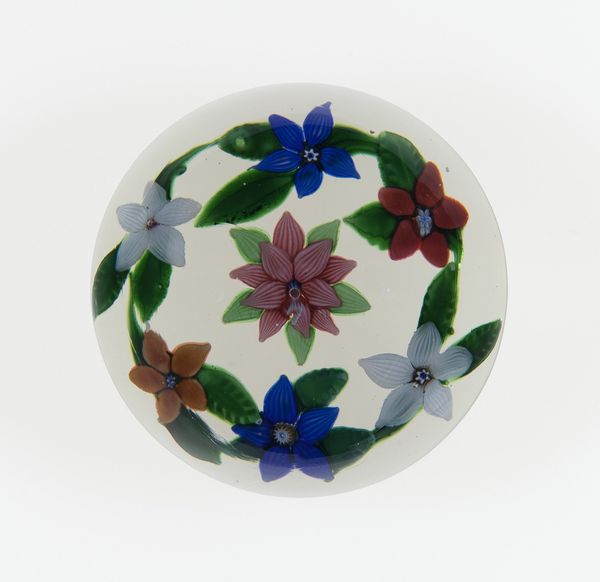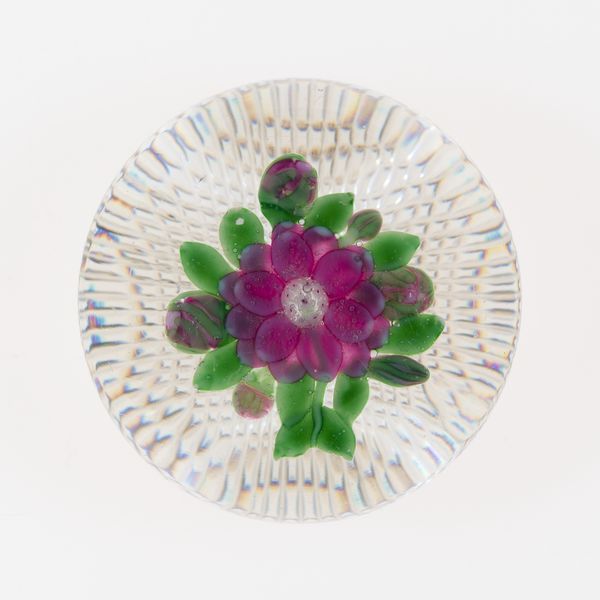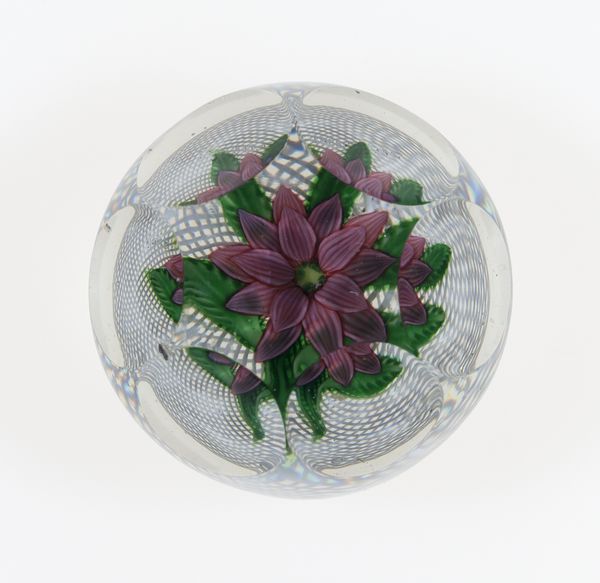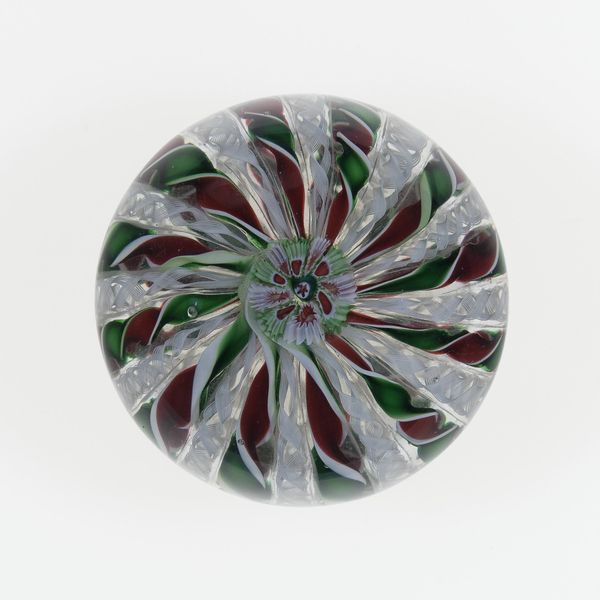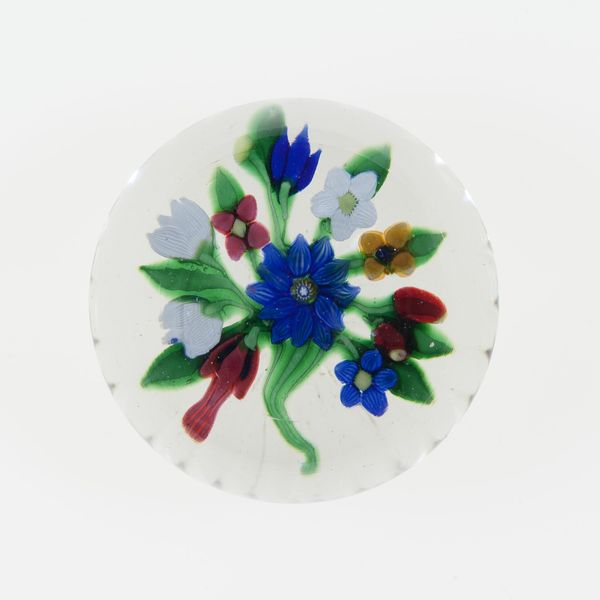
glass
#
glass
#
decorative-art
Dimensions: Diam. 7.6 cm (3 in.)
Copyright: Public Domain
Curator: Here we have a glass paperweight from Baccarat Glassworks, dating circa 1845 to 1860. What strikes you most when you first look at this, Editor? Editor: It's oddly serene. A delicate glass butterfly, perpetually frozen in flight over a bloom, trapped inside this clear orb. The radiating lines give it a subtle energy, like sun rays through water. Curator: Consider the laborious processes needed to create this. The glassmaking involved precise control over temperature, skill in manipulating molten materials. Notice, the delicate millefiori details on the butterfly's wings and the petals. How did these artisans balance mass production with artistic ambition in these objects intended for the desk, and therefore labor? Editor: That's fascinating. It reframes how we look at the era’s material culture. Paperweights became these bourgeois desk ornaments. But what did that symbolise within that time period? This piece appears within a time of revolution and transformation, politically but socially too: the growing industrialization and widening of class disparity, along with burgeoning new ideologies. Maybe the weight serves as a symbolic resistance against the whirlwind of changes? Curator: Or perhaps it’s a simple aspiration for control in an era defined by its chaos. This one showcases the incredible mastery in manipulating glass, which by this point had become less an alchemic magic than standardized manufacturing. The subtle differences of the components that created this artwork: color saturation, petal shapes, glass opacity… Editor: Definitely. I see it both as a symptom of consumer culture and as a cultural symbol. Even the butterfly, with its historical associations of transformation and beauty, might be intentionally symbolic. And I keep circling back to who made it, who was allowed that act of making and who had access to even this very humble art. Curator: Yes, thinking about access and labor helps bring the material’s properties to life. Glass making has a long tradition in alchemy, as you said, that’s easy to ignore. How do you take away new things from seeing this? Editor: Considering glassmaking, I wonder about visibility itself: the labor it hides, and the history that refracts through its clarity. Thank you for unveiling so much about the artist, its process. Curator: A pleasure. Considering these pieces beyond just “decorative art” illuminates so much.
Comments
No comments
Be the first to comment and join the conversation on the ultimate creative platform.
